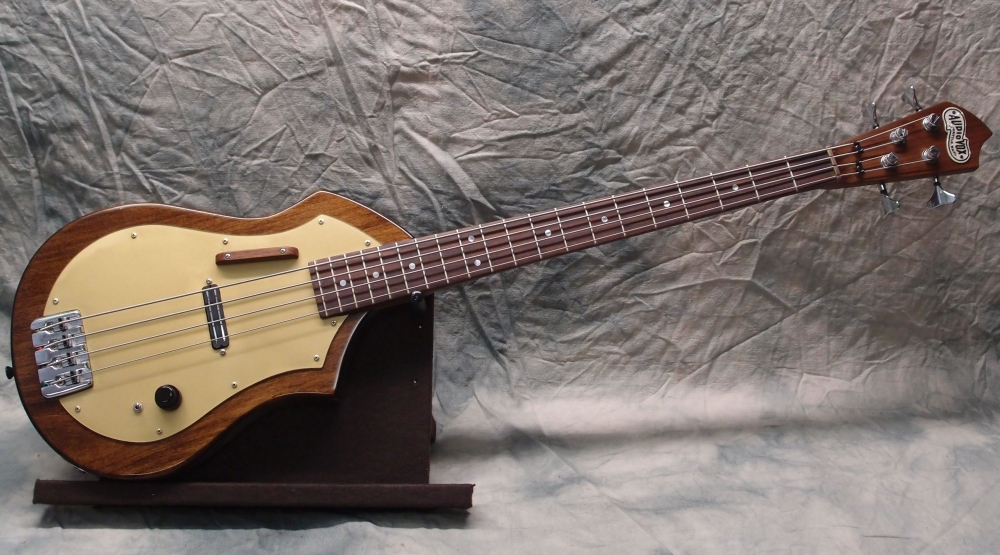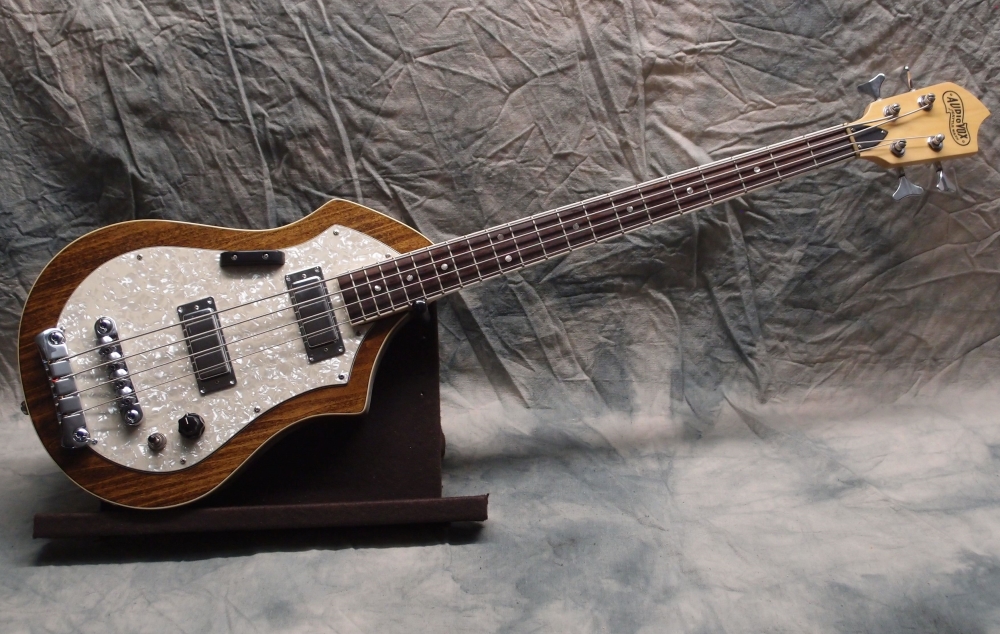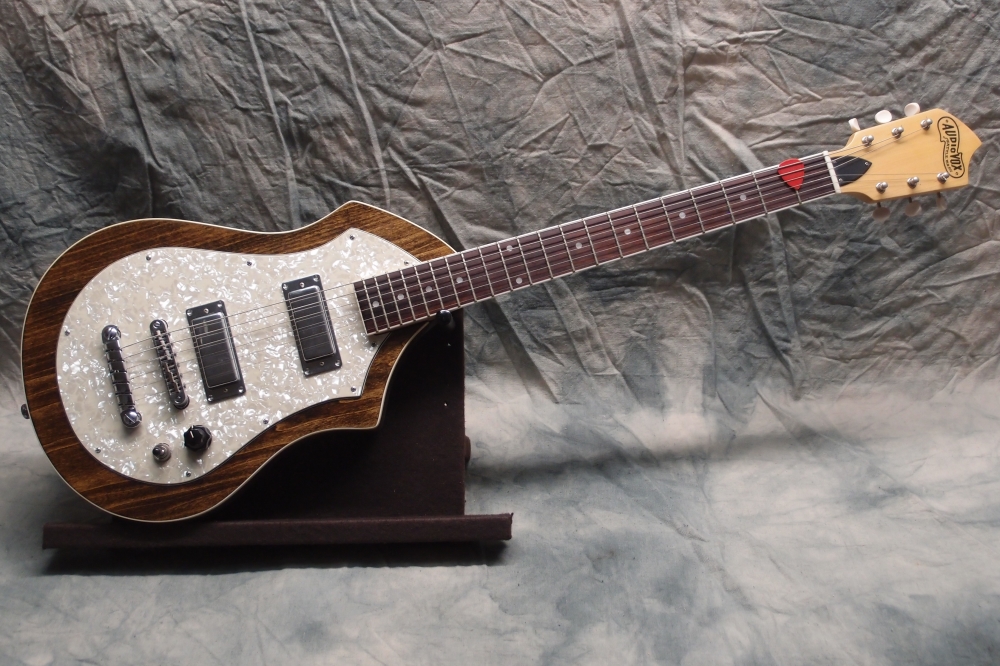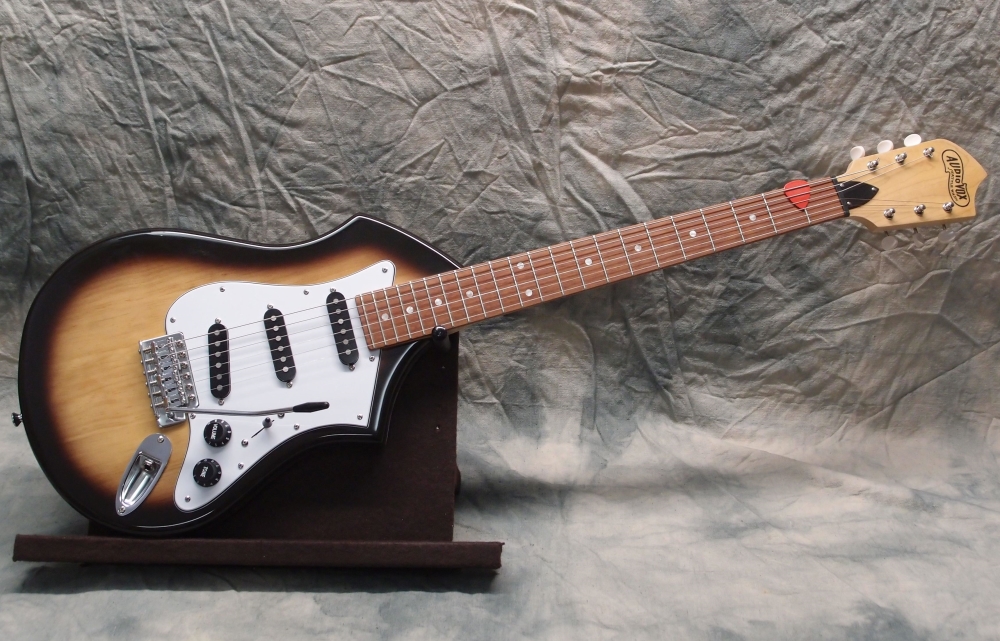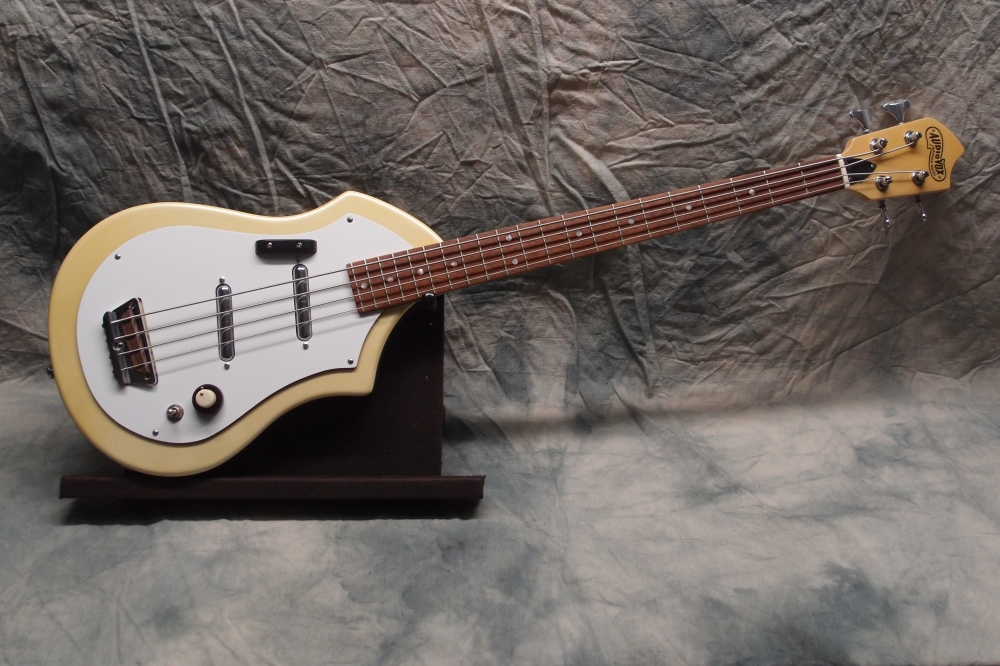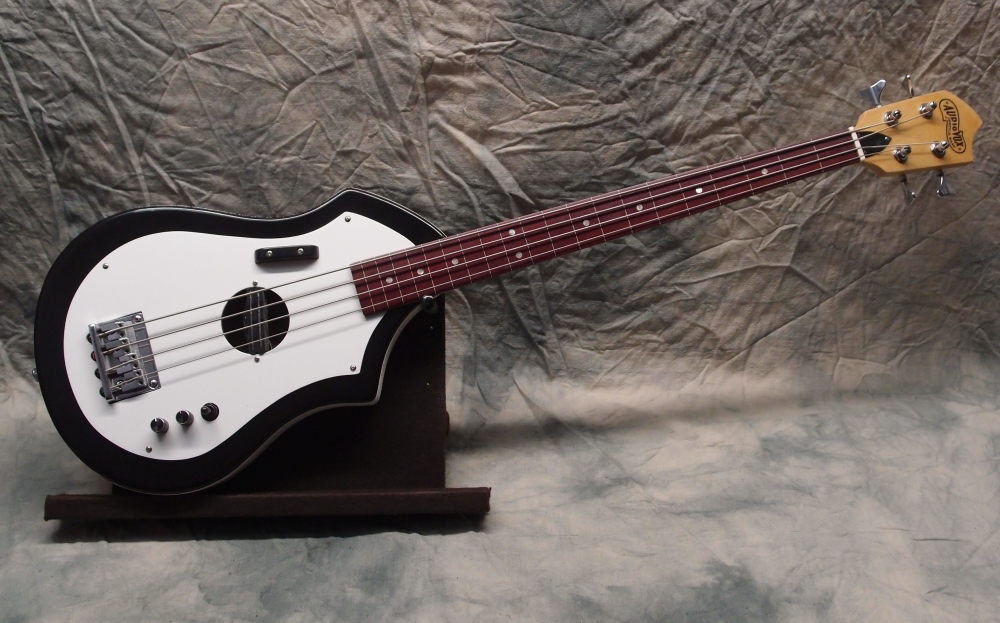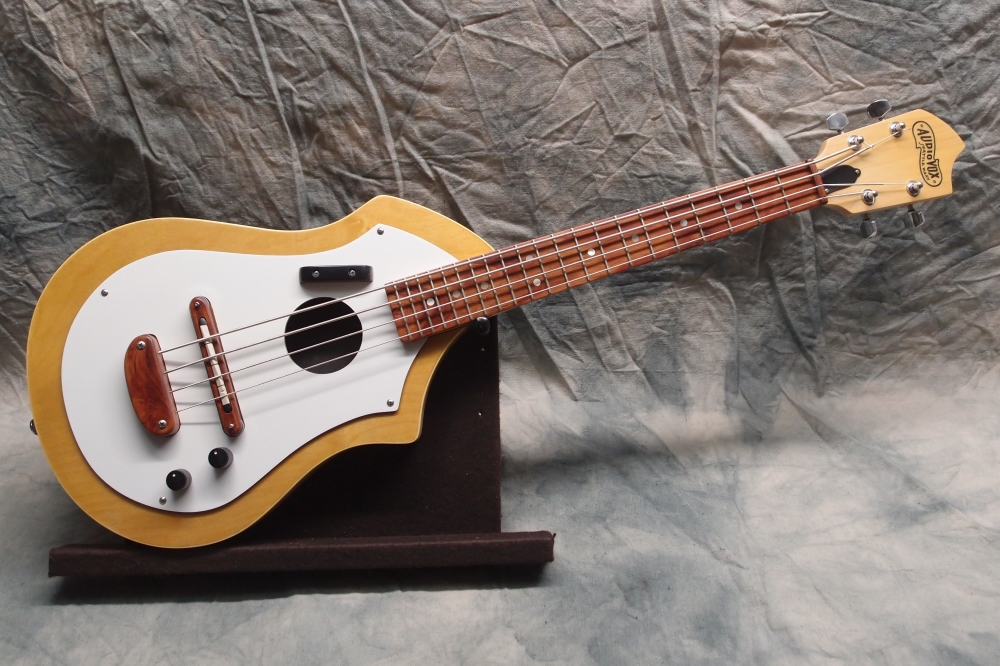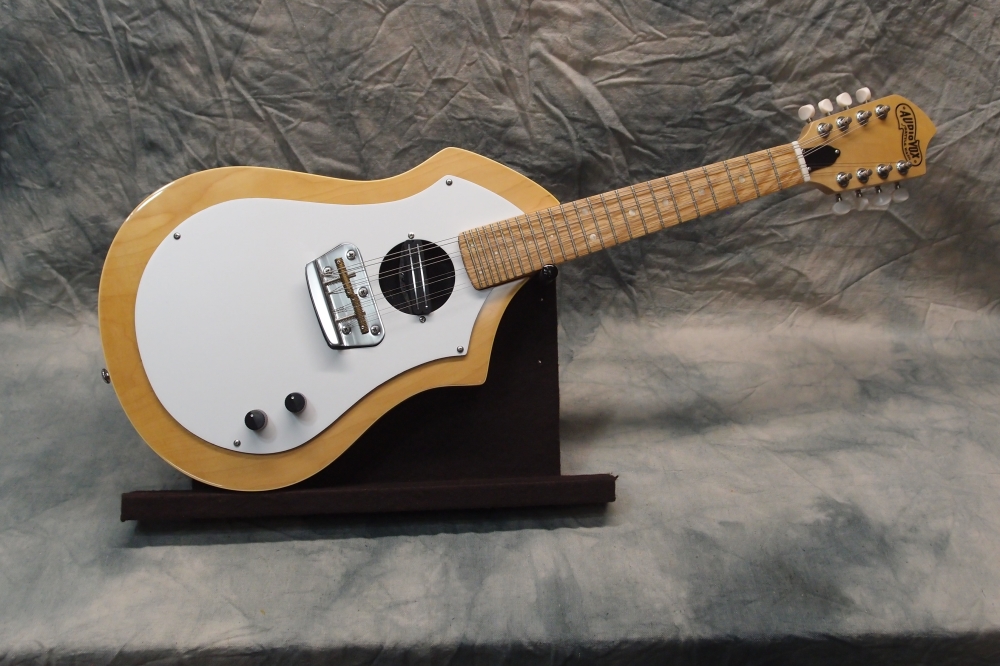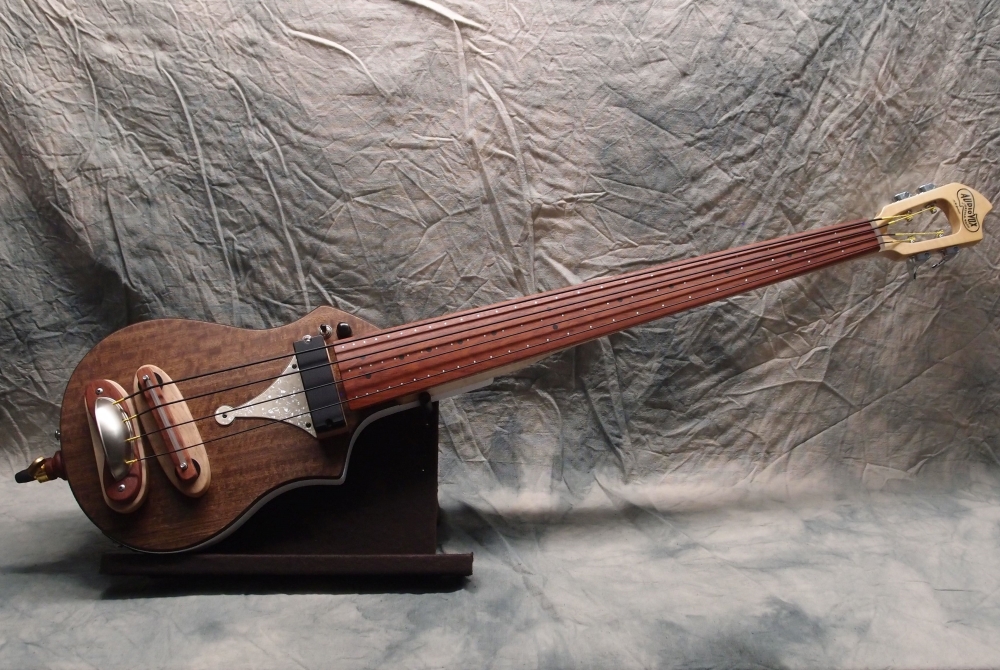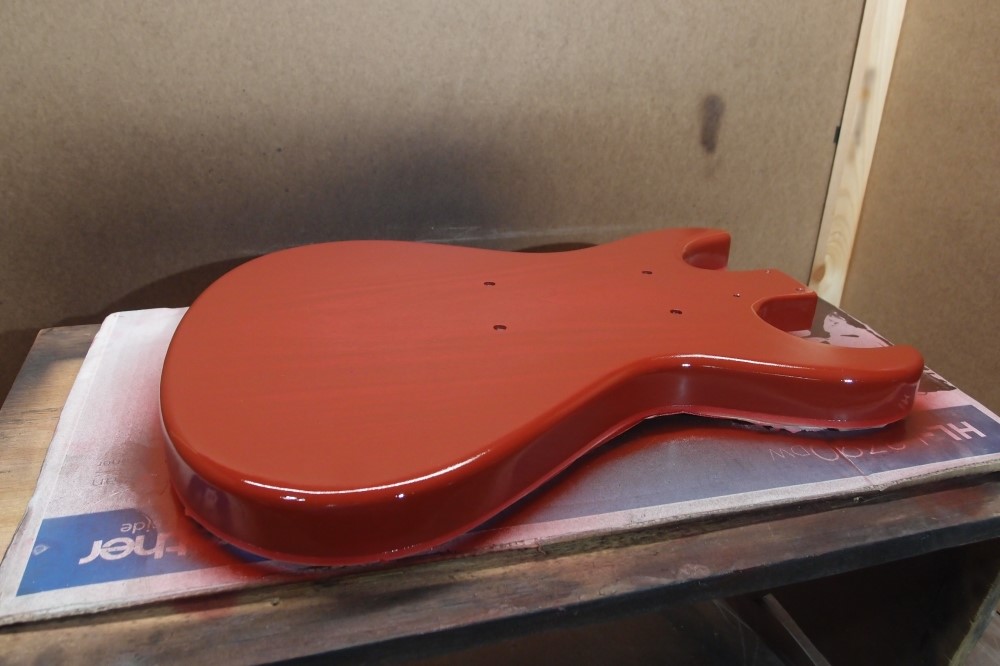Audiovox Batch Builds (4/5)
Jan 21, 2018

I got a nice polish on this, maybe I'll get it all together tonight.
Bad news for this one. I mounted the neck and realized there is no way the lightweight pine body is ever going to balance 12 tuners at the end of the neck. So rather than build something I know will be awful, I will do some kit-bashing. I have several of these that I started all at once, in different styles, but all to the same specs, so the parts are largely interchangeable.
So I took a much heavier finished body from another one with an incomplete neck. That balances much better. I just need to drill the holes for the bridge studs.
In the meantime though, I took the random-orbital sander to the pine body, and it is almost like glass now. I already have an idea for it. The nice thing about these expansive pickguards is that they cover a multitude of sins.
Feb 1, 2018
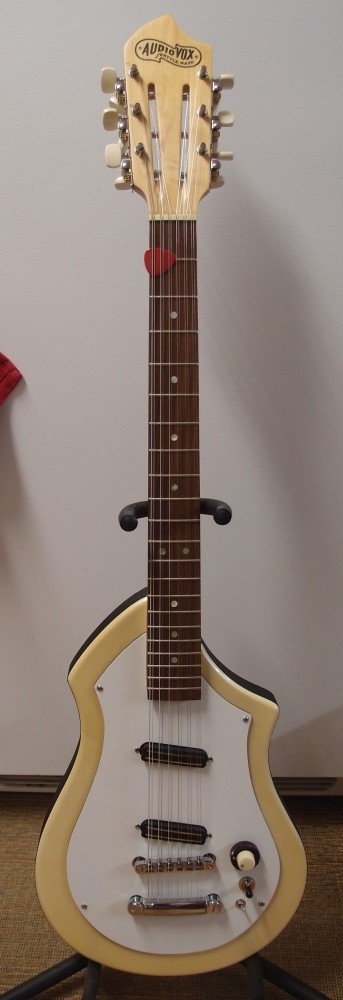
While this is most certainly not a bass, it is a Tutmarc. Although Tutmarc made guitars, I don't think he ever made a twelve, so this is probably the first and only. I've been pushing this project in different directions, and this is one of them.
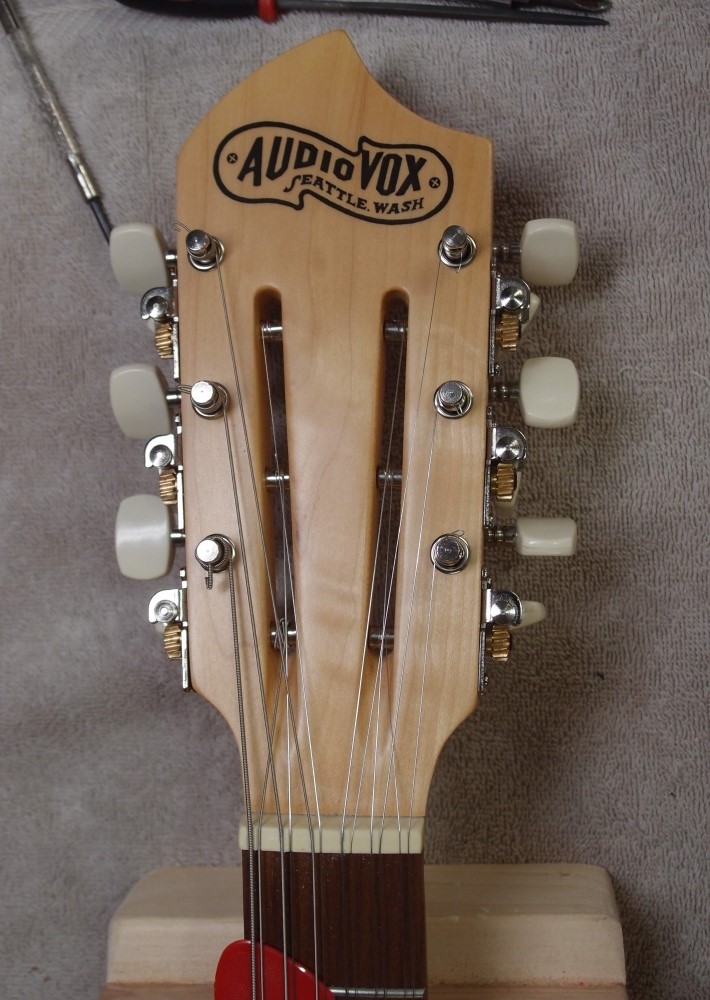
Here is the headstock, a la Rickenbacker. If you have sharp eyes, you'll notice that it is strung backward like a Rickenbacker as well. That required filing-out some of the nut slots, but has the distinct advantage of putting the self-destructing high-G on a front post, where it is easy to change, rather than buried in the slot. Tuning is confusing at first: for E A D the octave is on the back tuner and the main string is on the front, for G B E it is the reverse. If you've never had to tune more than four strings, one of these will drive you crazy.
The neck is finished walnut over maple, with a 15 degree back angle on the headstock. I put a 0.20" plywood shim in the neck pocket to raise it up to the bridge height while still remaining flat. I could have simply angled it back, but this is easier to work with. The neck has a 1/2" square steel tube for a truss rod.
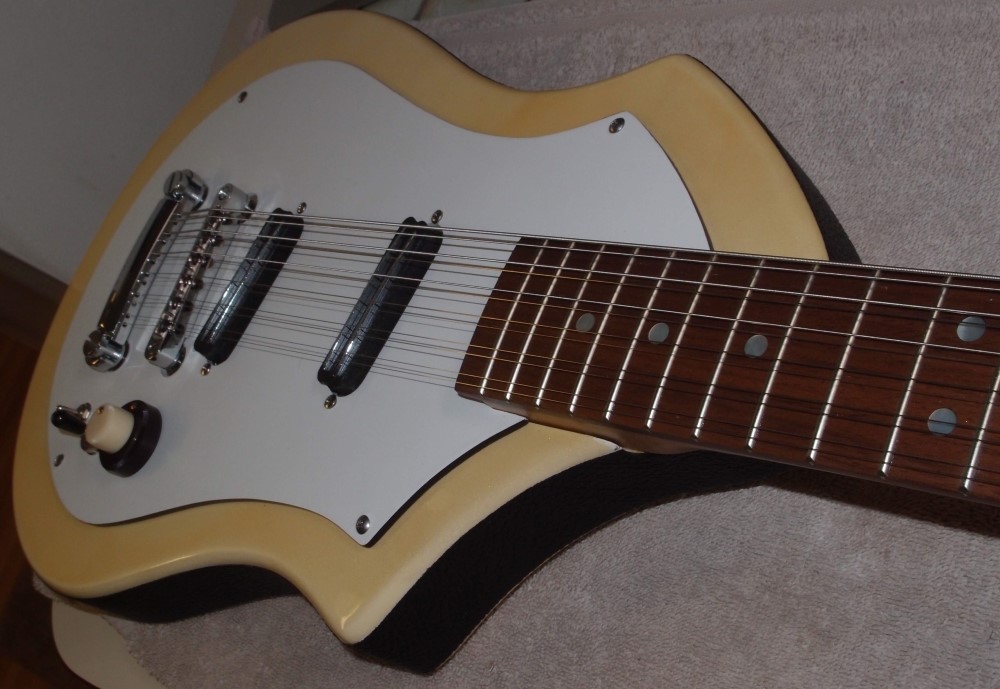
Here is the body. It is Danelectro-style construction: Masonite over a hollow plywood frame, with Tolex side binding. I put half a pound of lead tire weights in the back end of it for balance. The end result is a hefty 8.1 pounds, but it feels good. The finish is polyurethane over white pearl. The pickguard is also Masonite. The controls are Danelectro tone over volume, pickup selector (parallel wiring) and a pickup mode switch. Down puts the pickup coils in the standard series mode, up is parallel, for a brighter more jangly sound. Both modes are humbucking.
Anyway, the guitar plays and sounds pretty good, considering it has only been strung up for a couple of hours. Once it settles in, I will fine-tune the setup.
Feb 12, 2018
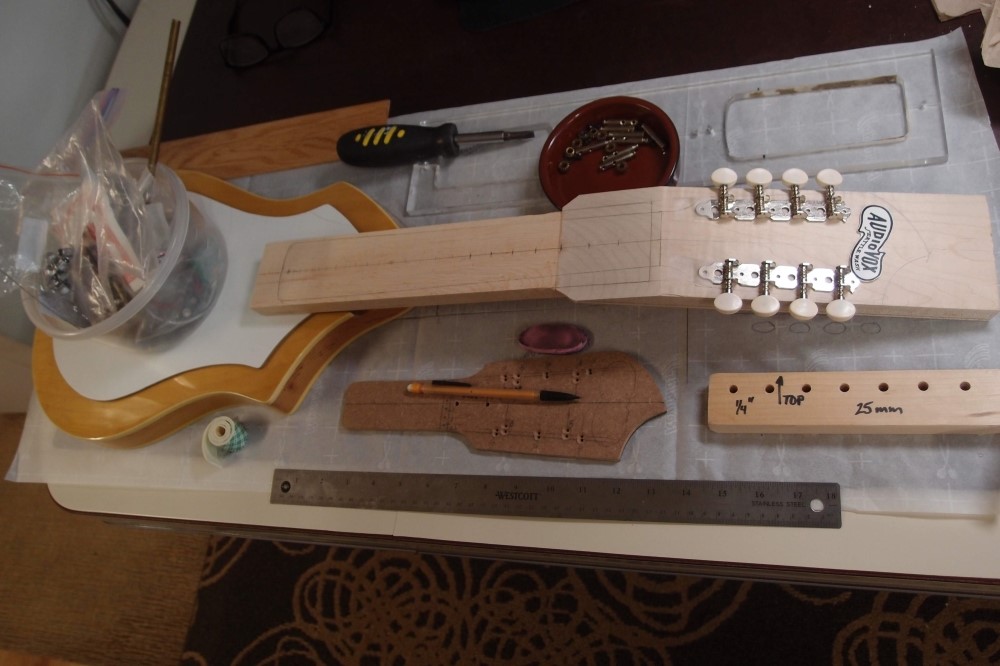
This is the body I had intended for the 12-string, with a new neck that will work much better with it. That leaves another body that I have already roughed-out for this neck. That one will eventually get the half-built guitar neck that was orphaned by the 12-string. In all, I have four more Audiovoxes in the works, that will make eight all together, which I think is enough:
- solid poplar 30" bass (finished)
- solid poplar guitar (finished)
- hollow pine Uke bass (finished)
- hollow 12-string guitar (finished)
- hollow pine this thing (next)
- hollow 30" bass
- hollow 30" fretless bass
- solid pine guitar
So if you want to know where the Audiovoxes are, they're at my house. Oh, and I forgot the original zeroth model, solid walnut 32" bass.
On another note, I've been progressively setting up the 12-string, and it is getting better and better. Today I filed the nut and bridge to even out the strings. Both parts were made for standard stringing, not reverse Rickenbacker stringing, so things were rather off. Much better now. The neck has crept into a barely discernible bow; the steel tube truss rod is working out well. The A-frame truss rod I used on my previous 12 proved to be a little weak. The steel tube is heavy though, and exacerbates the balance issues of a 12-string. In the future, I would use a lightweight adjustable rod.




